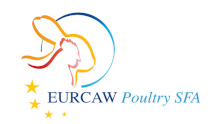Document type : Article published in Pig333
Author: John Pluske
Preview: Does co-mingling during lactation benefit piglets in the long term? See how socialisation influences pigs behaviour and physiology. […]
The common practice of mixing unfamiliar (non-littermate) piglets at weaning causes aggression and fighting that can additionally cause adverse welfare, health and performance outcomes, concurrent with activation of the piglets' stress responses. […]
The concept of pre-weaning socialisation (or co-mingling) of piglets, for beneficial post-weaning welfare, health and (or) production outcomes, is not necessarily new, dating back over 25 years. However, its widespread implementation has been limited by practical considerations in the farrowing room environment and perhaps an unawareness by industry to its potential roles and benefits in modern-day pork production. Nevertheless, and driven by issues including the future viability of the 'traditional' farrowing crate, greater emphasis on welfare, increased litter size, and our understanding of the need for newly-weaned pigs to have a good start in the nursery, there has been growing interest in this concept more recently. This is reflected in the growing number of peer-reviewed publications and articles appearing in the last 5-10 years.
How, then, can pre-weaning socialisation (or co-mingling) of piglets be done? Practically, piglet socialisation methods in indoor production systems have typically comprised: (i) systems that allow only the piglets to mix while the sow remains penned in her crate, e.g., by creating piglet doors between adjacent farrowing pens, by removing the partitions between adjacent farrowing pens, and (or) by providing access to an additional piglet area; or (ii) group-housing systems ("multi-suckling" systems), where both sows and piglets can freely interact, e.g., by removing a barrier at the entrance of the farrowing pen, by removing the farrowing pens themselves, or even by transferring sows and piglets from single housing to group housing. In either system, possibilities exist for an extended weaning age, an increase in the available creep space area, and mating of sows during lactation. As would be anticipated, there are numerous advantages and disadvantages associated with both types of systems, and the practical implementation of either requires much consideration and thought given the investments (e.g., in labour, in redesign) that would be required. Naturally, in outdoor pork production systems, some of these constraints do not exist.
A common feature of mixing non-littermate piglets with each other in lactation is increased aggression, with disruptions also to sow behaviour including possible teat damage and suckling frequency, the sucking behaviour of piglets, and poorer piglet growth, but these effects tend to be transitory. To the contrary, findings indicate that socialised piglets learnt social skills which benefited them in the longer term, enabling them to more rapidly form stable dominance hierarchies during future aggressive encounters with unfamiliar pigs after weaning. Furthermore, socialising piglets early in life by mixing litters before weaning not only can have a positive effect on behaviour (more play, less fighting) and performance after weaning, but can also impact physiology. A recent study by Saladrigas-García and colleagues (2021) examined the impacts of early socialisation and environmental enrichment (with toys) of suckling piglets on the caecal microbiota and metabolic responses before (-2 days) and after weaning (+ 3 days). These authors' reported a lack of effects of pre-weaning socialisation and enrichment, but after weaning, differences in the microbial structure, a reduced jejunal expression of the TLR2 (toll-like receptor 2) gene, a transmembrane receptor that plays a fundamental role in pathogen recognition and activation of innate immunity, and decreases in metabolites including triglycerides and fatty acids suggested an impact on reduced energy metabolism consistent with a reduction in aggressive behaviours in these animals.
All in all, experimental data and anecdotal experiences would appear to suggest that creating a physically and socially enriched environment in early life, such as by socialisation or co-mingling, can positively modify piglets' responses after by means of diminishing the impacts of social stress.




